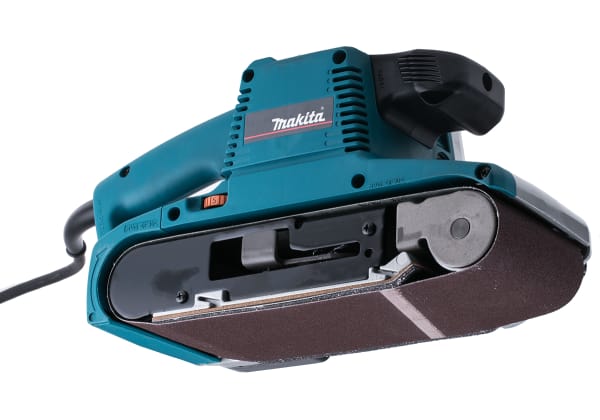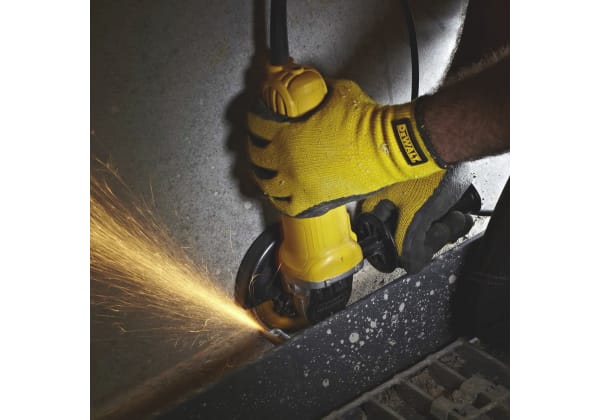- Published 13 Mar 2024
- Last Modified 13 Mar 2024
- 8 min
Guide to Abrasives
Our comprehensive guide to abrasives explores the main types, tools, and materials essential for optimising efficiency and performance in any industrial environment.

Reviewed by David Carmichael, Solution Engineer (March 2024)
This guide will help you select the best abrasive product for your needs. Choosing the optimum product will help you achieve professional results in fabrication and finishing applications, whether for metal, wood, plastic, or other materials.
What are Abrasives?
Abrasives are products used for cleaning, grinding, shaping, cutting, or polishing surfaces and materials. The use of abrasives is crucial to achieving the desired outcome on surfaces such as metal and wood.
They find extensive usage across various sectors and industries such as manufacturing, construction, and automotive. Abrasives come in a variety of forms and types, each designed for specific applications.
What are Coated Abrasives?
A coated abrasive consists of a backing material like cloth or paper, on which abrasive particles are bonded. The abrasive grain typically consists of aluminium oxide, silicon carbide, or zirconia alumina particles.
Coated abrasives are used in sanding and finishing operations. They are commonly utilised for tasks such as smoothing rough surfaces, removing paint or rust, and preparing surfaces for painting or coating. They are essential tools in industries requiring precision and high-quality finishes.
These abrasives are available in various forms, including sandpaper sheets, discs, belts, and rolls. The backing material provides support and flexibility, allowing the abrasive particles to remove material from the workpiece efficiently.
Properties of Abrasive Materials
Understanding the properties of abrasive materials is crucial for selecting the right abrasive for a specific task. This is because these characteristics affect the material's efficacy and longevity, as well as their suitability for specific applications.
This section will discuss distinguishing between natural and synthetic abrasives, explaining different grit grades, and key considerations when selecting abrasives.
Distinguishing Between Natural and Synthetic Abrasives
Natural abrasives are derived from minerals found in nature. Examples include emery and pumice. These abrasives are known for their durability and are commonly used in applications such as sanding wood or polishing metals.
Synthetic abrasives, on the other hand, are man-made materials designed to mimic the properties of natural abrasives. Common synthetic abrasives include aluminium oxide and silicon carbide. Synthetic abrasives offer consistent performance and are often preferred for precision grinding and cutting tasks.
Explaining Different Grit Grades
Grit grades refer to the coarseness or fineness of an abrasive material.
The grading system typically ranges from coarse (low grit number) to fine (high grit number). Grades are inversely proportional to grit size, so fine abrasives are higher grades using smaller grit sizes. For example, a coarse grit abrasive (e.g., 24-50) is suitable for grinding and heavy material removal, while a fine grit abrasive (e.g., 120-320) is ideal for a smooth finish.
The table below shows typical grit grades for each stage of the application process.
Application | Typical Grit Grades |
|---|---|
Heavy duty grinding | 24-36 |
Stock removal | 24-50 |
Cutting-off | 30-60 |
Deburring | 40-100 |
Blending and refining | 60-320 |
Surface preparation and cleaning | 60-320 |
Finishing | 120-320 |
Top Tip: A disc with a lower grit level will be more aggressive. Use a higher grit to avoid excessive damage.
Key Considerations When Selecting Abrasives
When choosing abrasives, several factors should be considered. These include the material being worked on, the desired finish, and compatibility with the tool or equipment being used. It is also worthwhile considering safety aspects such as dust generation, as some abrasives may produce hazardous particles.
By understanding the properties of abrasive materials, you can make informed decisions when selecting abrasives for your specific applications. Choosing the optimum product to use will help you achieve professional results in fabrication and finishing applications, whether for metal, wood, plastic, or other materials. At RS, we offer a wide range of abrasives with various grit grades to suit diverse industrial needs.
Uses of Abrasives
Abrasives play a pivotal role across various industries, providing essential solutions for a myriad of applications. From manufacturing and construction to automotive and electronics, abrasives are versatile, indispensable tools that ensure efficient operations and high-quality results. They serve a variety of purposes, ranging from paint and rust removal to surface smoothing and preparation for further treatment.
- In manufacturing, abrasives are used for material removal, surface preparation, and finishing processes. They help shape and refine raw materials, ensuring precision and accuracy in component and product production
- In construction, abrasives are used for tasks such as sanding, grinding, and polishing surfaces, enabling smooth finishes and enhancing durability
- Abrasives are important in the automotive industry. From repairing bodywork to refinishing paint, abrasives are used for sanding and smoothing surfaces, ensuring a professional finish
- In the electronics industry, abrasives are utilised for cleaning and preparing circuit boards, ensuring optimal performance and reliability
Over the years, abrasive technology has evolved significantly, offering improved performance, efficiency, and safety. Advancements in abrasive materials, such as the development of synthetic abrasives like silicon carbide and aluminium oxide, have revolutionised various industries. These modern abrasives provide enhanced cutting power, durability, and precision, enabling professionals to achieve faster results with increased accuracy.
Additionally, the introduction of innovative abrasive products, such as abrasive wheels, discs, belts, and pads, has further enhanced abrasives' versatility and effectiveness. These products are specifically designed to meet the unique requirements of different applications, ensuring optimal performance and efficiency.
As there are many abrasive tools available, it can be tricky to know which is best for specific job requirements. Here we show which tool to select for the job at hand and which can be used as an alternative.
Task | Best Tool/s | Alternative Tool/s (where applicable) |
|---|---|---|
Cutting – metal | Cutting discs | Diamond discs or burrs |
Cutting – non-metal | Diamond discs | n/a |
Grinding | Grinding discs or wheels | n/a |
Stock removal | Flap discs or wheels | n/a |
Deburring | Burrs or flap wheels | Sanding discs, hand pads, or abrasive cloth |
Hand sanding | Hand pads or abrasive cloth | n/a |
Surface preparation, stripping, or cleaning | Sanding discs or belts, flap discs, or fibre discs | Flap wheels, hand pads, or abrasive cloth |
Surface blending and conditioning | Sanding discs or flap discs | Hand pads or abrasive cloth |
Types of Abrasive Materials
There are numerous types of abrasive materials, including sandpaper, grinding wheels, cutting discs, and abrasive belts. Each type has distinct properties and applications.
Here is a list of abrasive materials:
- Aluminium Oxide: This versatile abrasive is suitable for a wide range of applications, including grinding, deburring, and polishing. It is known for its durability and ability to maintain sharp edges
- Silicon Carbide: Ideal for cutting, grinding, and shaping hard materials, silicon carbide is a popular choice for tasks such as metalworking, woodworking, and stone polishing
- Diamond: Renowned for its exceptional hardness, diamond abrasives are typically used for precision grinding and polishing applications on tough materials like ceramics, glass, and gemstones
Abrasive products come in several types:
Abrasive Wheels
Known as cutting-off, the shaping of materials to the correct dimensions is carried out by cutting wheels. These rotating discs are commonly used for grinding, cutting, and blending metals and other materials.
Abrasive Discs
Like abrasive wheels, discs are available in various sizes and are used for tasks like sanding, deburring, and surface preparation.
- Diamond cutting discs are used when cutting abrasive, often mineral-based materials
- Fibre and flap discs are used to remove heavy weld seams and excess material
- Conditioning discs are used to create smooth transitions between surfaces and curves, or between two different metals
Top Tip: Cut from the edge of the component to avoid damaging the disc and causing potential harm to the operator.
Abrasive Brushes
These tools feature bristles embedded with abrasive particles and are effective for removing rust, paint, and other surface coatings.
Sandpaper
Available in different grits, sandpaper is a flexible sheet coated with abrasive particles. It is commonly used for sanding and smoothing surfaces. Sanding blocks are handheld tools used in conjunction with sandpaper to provide better control and even pressure during use.
Sanding by hand offers additional advantages over machine work. Sanding in tight spaces, over complex contours, and in areas needing special attention can demand a finish more easily achieved by hand. Conversely, abrasive sanding discs are ideal for larger areas or sanding away stubborn finishes like varnish.
Top Tip: The higher the grit, the better the finish you will achieve, but the less material you will remove.
Summary
At RS, we provide a comprehensive range of abrasives to meet the requirements of different applications. Our selection includes various grit grades, backing materials, and abrasive types, ensuring you can find the right abrasive for your needs. Explore our offering to discover top-notch abrasives that deliver excellent performance and durability.


